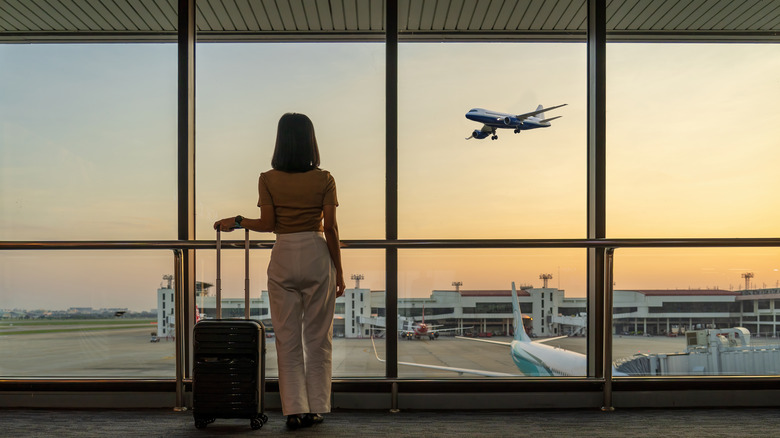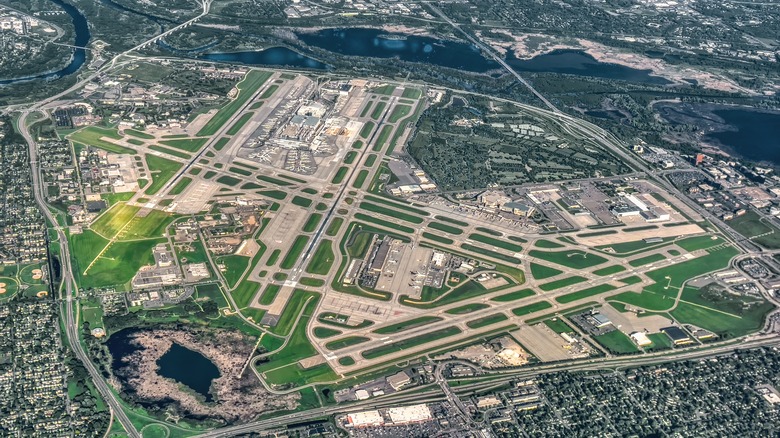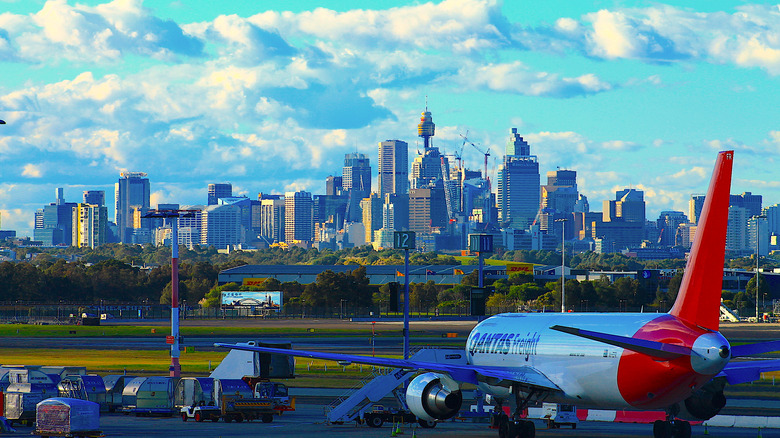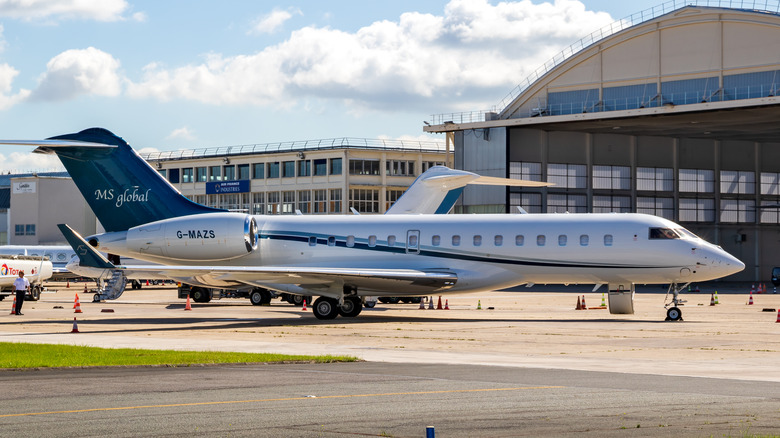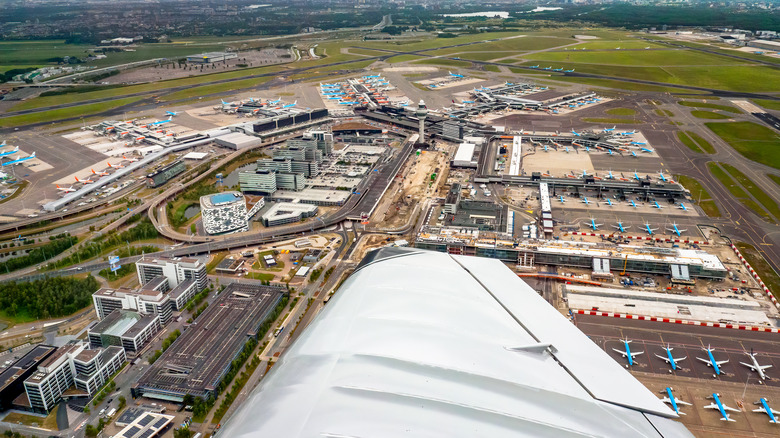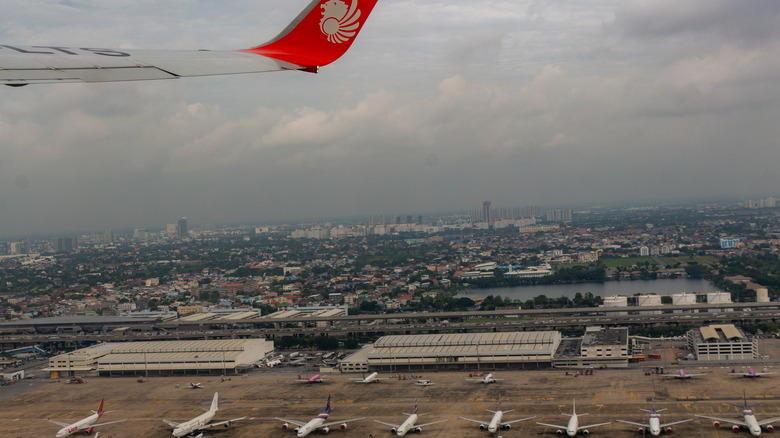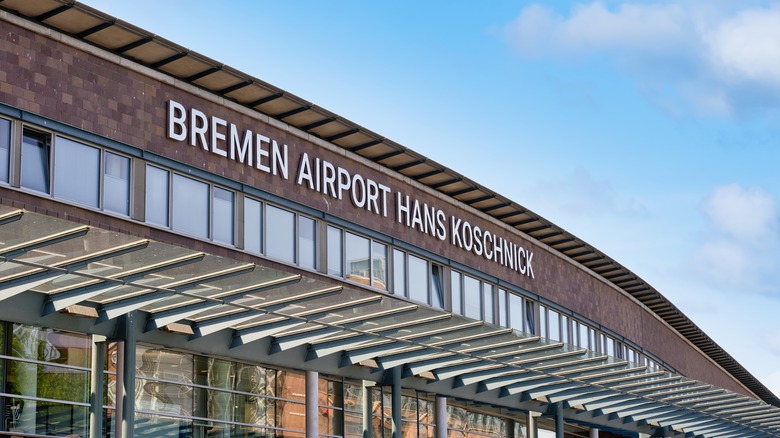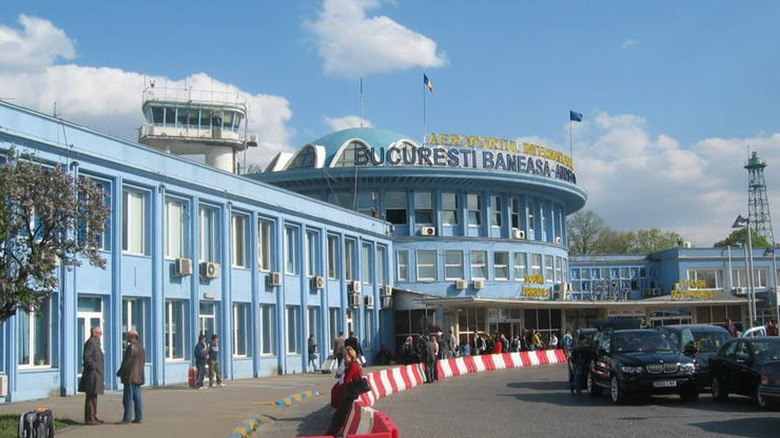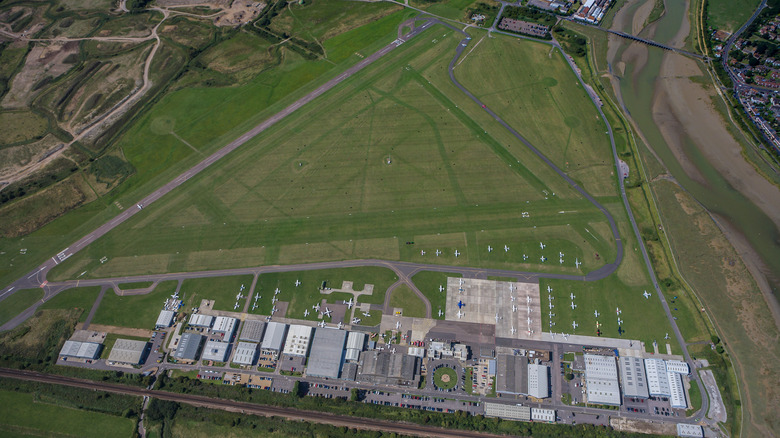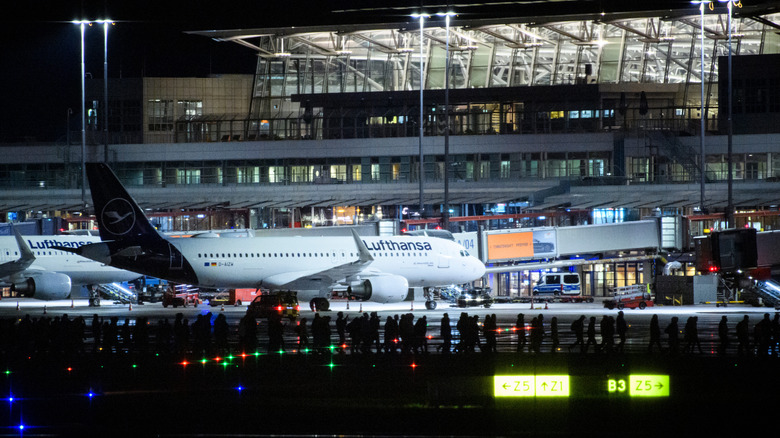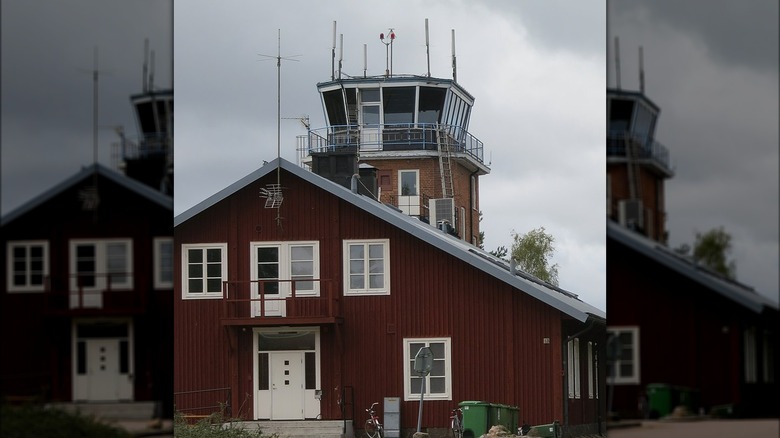The Oldest Operating Airports In The World
Air travel is an integral part of the puzzle for explorers and adventurers worldwide. No matter where you're going or where you're from, chances are high that a new vacation or exploration opportunity involves air transit and the inevitable wait in an airport. Today, American travelers will be familiar with TSA lines and procedures, but a century ago, when flights were still in their infancy, the then-luxury of flying was a wildly different experience.
From the origins of human flight at Kitty Hawk (one of the best-kept secret travel destinations in North America) to the contemporary ins and outs of searching for flight deals on Google Flights, Kayak, or elsewhere, air transit has changed significantly through the years. Perhaps surprisingly, though, some transit hubs haven't gone through all that much evolution. The modern airport is a high-tech, streamlined affair, but some of the most interesting airports in the world are actually those that have been standing for a century. Once air travel became a viable option for transportation, many airports sprang into existence, with some serving to this day!
The modern incarnations of relatively ancient airports might not resemble their earlier footprint in key ways — for instance, digital ticketing has almost totally usurped the classic paper ticket. But there's so much history to be seen in these icons of early air travel. A flight enthusiast might consider traversing one or more of these airports that served as the backbone of early human flight for a unique blast from the past meets modern airline experience!
Minneapolis-St. Paul International Airport (MSP), Minnesota, USA
The sprawling regional airport that serves Minnesota's "Twin Cities" showcases a storied history that spans over 100 years of service to the skies. Before it was an airfield, MSP's 160-acre terrain was Snelling Speedway, a venue supporting the community's automotive racing exhibitions. The facility was waning in popularity in the 1910s, leading to the Minneapolis Aero Club's purchase of the land for alternative purposes.
The year was 1920, and the first wooden hangar was completed on the airfield that would come to be known as Speedway Field. Not 20 years after the first Wright Flier provided the rudimentary blueprint for powered human flight, the U.S. government was exploring ways to utilize air travel to revolutionize mail delivery. Rather than shipping letters across the country by horse, train, or otherwise, the postal service sought to employ large-scale fields that could be outfitted with runways and postal depots. Speedway Field became one of these among a network of early facilities that would ultimately morph into the modern airport system we know today.
Northwest Airways took command of the hangar and began servicing the government's airmail requirements in 1926, and by 1929, the airfield had begun offering passenger services. Nineteen forty-eight saw the airport renamed for a final time, with international flights now integrated into the facilities offerings, it became Minneapolis-St. Paul International Airport. In 2023, MSP served almost 35 million passengers (nearing its 2019 record of 39.5 million before the pandemic) and connected the North Star State to a huge network of American and Canadian cities and numerous countries in Western Europe, Mexico, South Korea, and Japan.
Sydney Kingsford Smith International Airport, Mascot, Australia
Established in the same year as MSP (1920), Sydney Airport quickly became a crucial hub for the Australian city. The first runways were constructed in 1933, providing the airfield with a much-needed boost, allowing a variety of airplanes to take off and land at the facility. In 1953, the airport gained a new official name, a moniker it still showcases (Sydney Kingsford Smith International Airport) in honor of a renowned Australian pilot.
Nineteen seventy saw the introduction of a new international terminal and runway facilities sizeable enough to support massive jumbo jets like the Boeing 747. This update unlocked the potential for marathon flights from faraway places to reach the remote southern continent without requiring travelers to make multiple, smaller hops. Two thousand and two saw the Australian government sell the airport to private management under an umbrella organization called the Sydney Airport Corporation Limited.
Before it served massive jets and offered the skies to more than 10 million passengers in just the first quarter of 2024, the airfield was a bull paddock. The Australian Pilot Nigel Love found the location and targeted it for his proposed aviation company specifically because of its use in this regard. Because cattle had trampled it for many years, the landscape was impressively flat, reducing the need to terraform the area to accommodate the precision ground movements of aircraft. An automotive racing club owned the area, and Love acquired a three-year lease and began building his first hangar in 1919. The first official flight from the airfield took place with Love at the controls in January 1920.
Parise Le-Bourget Airport, Paris, France
Although Parise Le-Bourget Airport was officially established in 1919 — a year after the first official postal airline's launch from the site — the airfield was used as a wartime aviation operation, starting in 1914. Désiré Lucca identified the site in the countryside just north of Paris that year while working to establish an effective air presence near the capital to combat German aerial units. The Battle of the Marne was organized by recognition flights from this site between Le Bourget and Dugny, showcasing its importance immediately after the French army's effort to transform the landscape.
After the war, this airport expanded rapidly, with flights on one route between Le Bourget and Croydon (a town just south of London and within the modern London metro area) taking off six times per day, for instance. The airport also played host to Charles Lindbergh in 1927 when he landed in "Spirit of Saint Louis" to a crowd of 200,000 onlookers. By the end of the 1930s, travel through the airport had increased tremendously from a few hundred passengers to many tens of thousands. The facilities enjoyed a total revamp in the lead-up to the Universal Exhibition in 1937.
Rome Ciampino Airport, Rome, Italy
While many of the first airports around the world were established to hasten the flow of goods and information (through mail services, for instance), Rome's oldest air travel hub was built to service the early Italian aerial forces. Ciampino was founded in 1916 to support military operations in the skies, situated about 7 miles south of Rome at Via Appia. This made it easy to get to the center of Rome while also providing crucial air cover for the Italian capital. Ciampino Airport would remain a military installation until 1947.
The airport fell into Allied hands after the war, and the first commercial flight to touch down on its runways was actually helmed by an American venture rather than an Italian one. Nineteen forty-six saw a Trans World Airlines DC-4 land at the soon-to-be-converted airfield, and roughly a year later, Italian aircraft would take to the skies from these runways. Alitalia's (then operating as Aerolinee Italiane Internazionali) inaugural flight touched down at Ciampino on its way from Turin in May of that year. Ciampino remained Rome's singular gateway to the skies and the hub for Alitalia until the city's new airport was opened in 1962.
Today, Leonardo da Vinci–Fiumicino Airport is the primary airport in the greater Rome metropolitan area and the easiest way to fly to Italy from the United States. But Ciampino Airport has remained in operation for more than 100 years after its inauguration. The hub serves low-cost airlines and general aviation, so it's a viable option for some travelers looking for a change from the massive airport experience in more ways than one.
Amsterdam Airport Schiphol, Amsterdam, Netherlands
Yet another story that begins with military rather than civil flight. Schiphol, named for the 15th-century lowland marsh area (and later fort) it sits near, was a grassy airfield with just four wooden hangars in its earliest days. In September 1916, the first Dutch military flights to land at the airfield inaugurated it as a newly established wartime asset.
Skip ahead just four years, and the airport had transitioned into a commercial air transit feature, welcoming its first civil flight from London. Since then, Schiphol has grown into the third busiest airport in Europe. It plays host to KLM Royal Dutch (the Netherlands' national carrier and one that joins the list of airlines with great customer service) and SkyTeam airline alliance flights (including those from Delta — the United States' second largest airline).
But unlike many other historic airports, the transition into civil aviation and growth alongside ballooning passenger demand hasn't been straightforward. Instead, the arc of history that follows the fortunes of Schiphol airport and Dutch aviation more broadly was complicated for a time by the Second World War. When the Gernab invasion came to the Netherlands, Schiphol was impressed into service as a German military flight facility before ultimately being destroyed. However, reconstruction began in May 1945, soon after the Germans were routed in the Netherlands. Flights resumed in short order, with the first flight with passengers onboard landing in July.
Don Mueang International Airport, Bangkok, Thailand
Interestingly, while Don Mueang is one of the oldest airports in the world — launched in 1914 — it was the second airport founded in Thailand, not its first. Sra Pathum Racecourse served as the first airfield established in the country (1911), but operations were ultimately relocated because it was in a flood-prone area. Don Mueang Airport was set up as its replacement. Upon its inauguration on March 8, 1914, the Sra Pathum site returned to its original status as a racing venue — now the Royal Bangkok Sports Club.
Ten years later, Don Mueang began serving commercial aviation customers, with the first arrival being a KLM flight. The airport has matured alongside Thailand's aviation industry, serving Bangkok as its primary airport for much of its life. Only in 2006 was the now-primary Thai airport built (Suvarnabhumi International Airport). In its new role as a secondary hub for air travel, the facility serves domestic flights bringing passengers around Thailand. It is a magnetic draw as one of the world's best budget airlines — of which there are a great many in Asia that travelers can opt to fly with on a shoestring budget.
Bremen Airport, Bremen, Germany
The German city of Bremen was the site of one of the earliest airports in the world (although it wasn't the first in the country or continent). The plan to construct an airship station in Bremen took root in 1909, but airships ultimately never found a home here. Even so, the Bremen Airship Association laid the foundations of the modern airport with the construction of the site's first aircraft hangar. In modern times, European commercial aircraft manufacturer Airbus builds many of its aircraft at a Bremen-based plant.
Instead of airships, the Neuenlander field served as a runway for airplanes, and in May 1913, the facility was officially christened. As with many early airports, some of the first international arrivals came in the form of KLM itineraries, beginning in 1920 for Bremen. During WWII, the airport — alongside virtually all of Germany's commercial aviation industry — fell out of use for all but military applications. Bremen was bombed heavily throughout the conflict because it doubled as a production center during the war (but in pursuit of German warplanes rather than commercial jets). After the war, the airport was rebuilt and reopened in 1947. In modern times, it is known as Bremen Airport Hans Koschnick (as of 2017) and offers flights to 200 international destinations with two runways.
Bucharest Airport Aurel Vlaicu, Bucharest, Romania
The modern-day business traffic airport serving Bucharest (since 2012), Bucharest's Aurel Vlaicu Airport, is sometimes referred to as Baneasa Airport because of its location. The first of Baneasa's flights took place in 1909, but the airport wasn't established until 1912 when Romania's National Air League organized its first flight school to be housed there. The facilities quickly became a mainstay of transportation for Bucharest and Romania more broadly. Until the 1970s, it was the only international airport in Romania and Bucharest's sole terminal for air travel.
The 1920s saw a major expansion in the airport's operations, with the French Romanian Company of Air Navigation established in 1920 to provide goods, mail, and consumer transportation throughout Romania and beyond. In 1922, the first transcontinental airline was established, with Bucharest acting as a key stop in the route (from Paris through to Constantinople). With the opening of Henri Coanda International Airport, the demand at Aurel Vlaicu fell through the floor. TAROM (Romania's oldest airline and the country's flagship carrier) shifted its operations to the new airport in the 1990s, leaving the older facility to change course and become a more discerning, business-first transportation hub.
[Featured image by Michael Katai via Wikimedia Commons | Cropped and scaled | Public Domain]
Shoreham Airport (Brighton City Airport), Brighton, U.K.
The United Kingdom's oldest airport isn't Heathrow or any other massive operation that might be found farther north. Instead, it's located near England's southern coastal city of Brighton. Brighton (Shoreham) Airport began servicing pilots looking to get airborne in 1910 and incorporated as an official airport a year later. It served civilian aviation and hobbyists participating in the then-fledgling practice of lifting off in a powered aircraft and sipping around the skies over Brighton's green seaside fields.
The airport was retrofitted to serve wartime needs during both world wars, and given Britain's proximity to Germany and the latter's penchant for attempting to bomb England into submission — particularly during the Second World War — this air station was crucially important in the British defense. It served a critically important role in air-sea rescue during this time, and the D-Day landings were partially orchestrated from the facilities of Shoreham. In 1971, the airport took on new growth as a civilian airport — known then as Brighton Hove and Worthing Joint Municipal Airport (Shoreham). The airfield today serves a bevy of pilots engaged in general aviation, with around 50,000 aircraft movements taking place each year in contemporary flight planning.
Hamburg Airport, Hamburg, Germany
The oldest international airport in Germany is in Hamburg. The facilities were established in January 1911, starting with the construction of a hangar that could accommodate two zeppelins. This was demolished after the war, however, to make way for a lighter, smaller, and far more agile craft that came with the dawn of the airplane. In 1920, the first airplane flights took off from Hamburg to destinations around Germany and beyond, including Amsterdam. That year, its commercial airplane flights served 241 flyers. In 2019, 17 million passengers clambered through the halls of Hamburg's terminals.
Hamburg Airport escaped the Second World War without damage, and it therefore became a crucial component in the infrastructure of the Berlin Airlift that would operate through the years of divided Germany. Hamburg Airport was also the site of Deutsche Lufthansa's inaugural voyage, taking off for Munich in 1955. Five years later, the airport was the site of Lufthansa's first jet airplane landing, a Boeing 707.
Ljungbyhed Airport, Bonnarp, Sweden
In a small town in southwestern Sweden, one of the first airports in the world was established to support flight training just as the practice of powered aviation was finding its wings, so to speak. Often referred to as "the cradle of aviation," the Swedish facility has overseen the training of thousands of pilots (including 5,200 fighter pilots between 1926 and 1998). Ljungbyhed Airport was established in 1910, and Enoch Thulin launched his flight school in 1915. Shortly afterward, the Swedish Air Force claimed a part of the airport for its fifth airbase, training pilots here for generations.
The airport sports four parallel runways, rather than the crisscrossing design that most airports utilize in order to take full advantage of their ground space. However, two runways remain in use. Today, pilot training continues at Ljungbyhed, with the aviation organization TFHS running a collegiate training program established in 1984 to give commercial pilots their start.
[Featured image by Jorchr via Wikimedia Commons | Cropped and scaled | CC BY-SA 3.0]
College Park Airport, Maryland, USA
The airfield at College Park in Maryland is the oldest continually operational airport in the world. It was here that the U.S. Cavalry's Lt. Frank Lahm selected a site (first by surveying it via the soon-to-be-antiquated balloon and then on horseback) that would train some of America's first pilots. When the Army completed their purchase order from the Wright brothers for their first aircraft, the deal came with a promise to train two officers in the art of human flight. In 1909, the airport at College Park was established, and the training commenced.
From there, plenty of firsts for air travel were recorded, from an early speed record set by Wilbur Wright to the first female passenger, and the first bombs dropped from an airplane with the help of bombsights. American aviation grew in leaps and bounds at the College Park facility. It's known as "the Field of Firsts," as a result of all the groundbreaking history made there.
Soon after, Congress allocated $125,000 to establish a true army aeronautics corps. This funded the purchase of five additional aircraft and the creation of a true flying school. Oodles of research and experimentation aimed at improving powered flight and aerial military systems also took place at the College Park Airport facility. Modern flight operations utilize the airport for general aviation in the D.C. metro area, and the site is home to a wonderfully colorful aviation museum.
[Featured image by Blacktupelo via Wikimedia Commons | Cropped and scaled | CC BY-SA 4.0]
